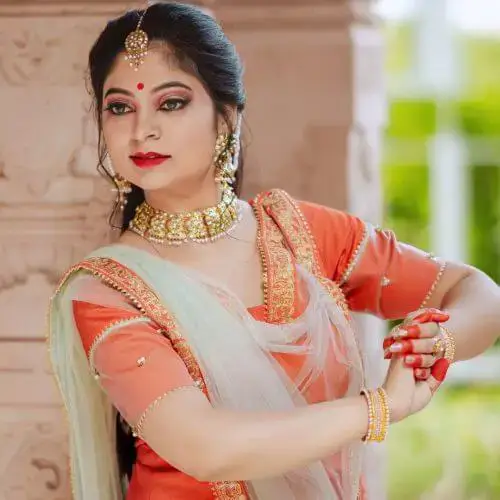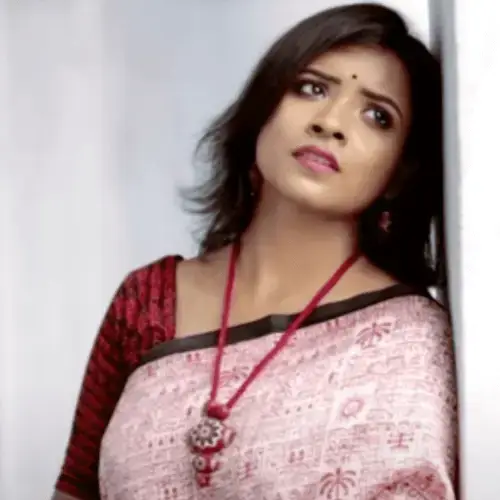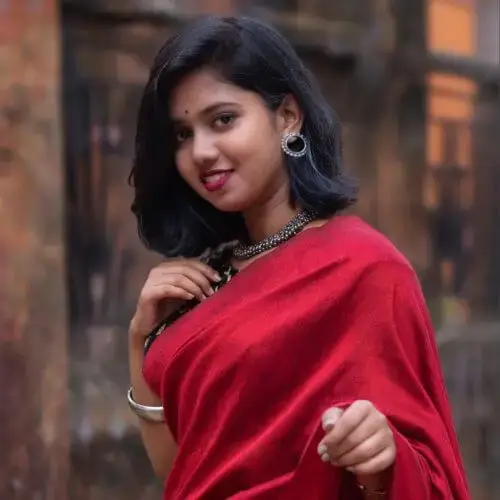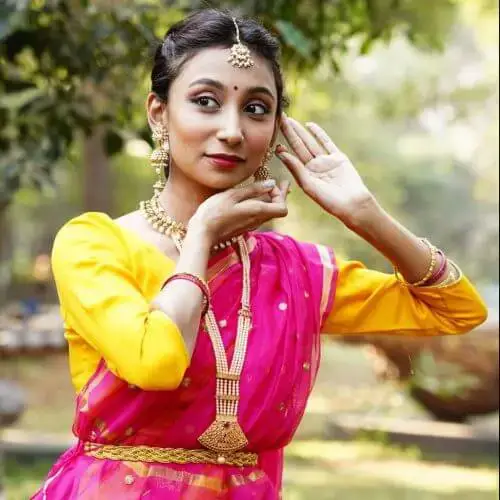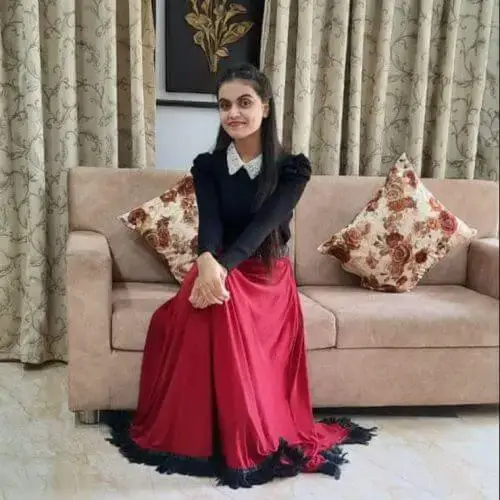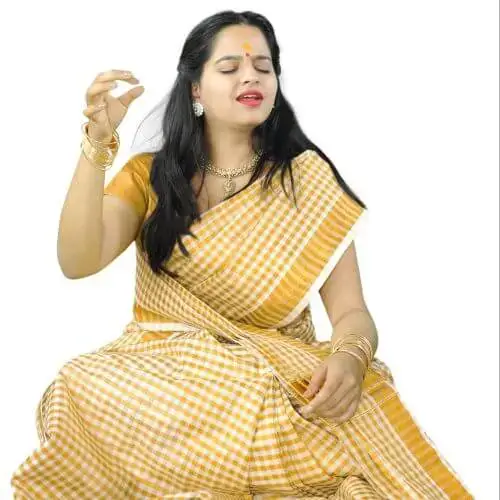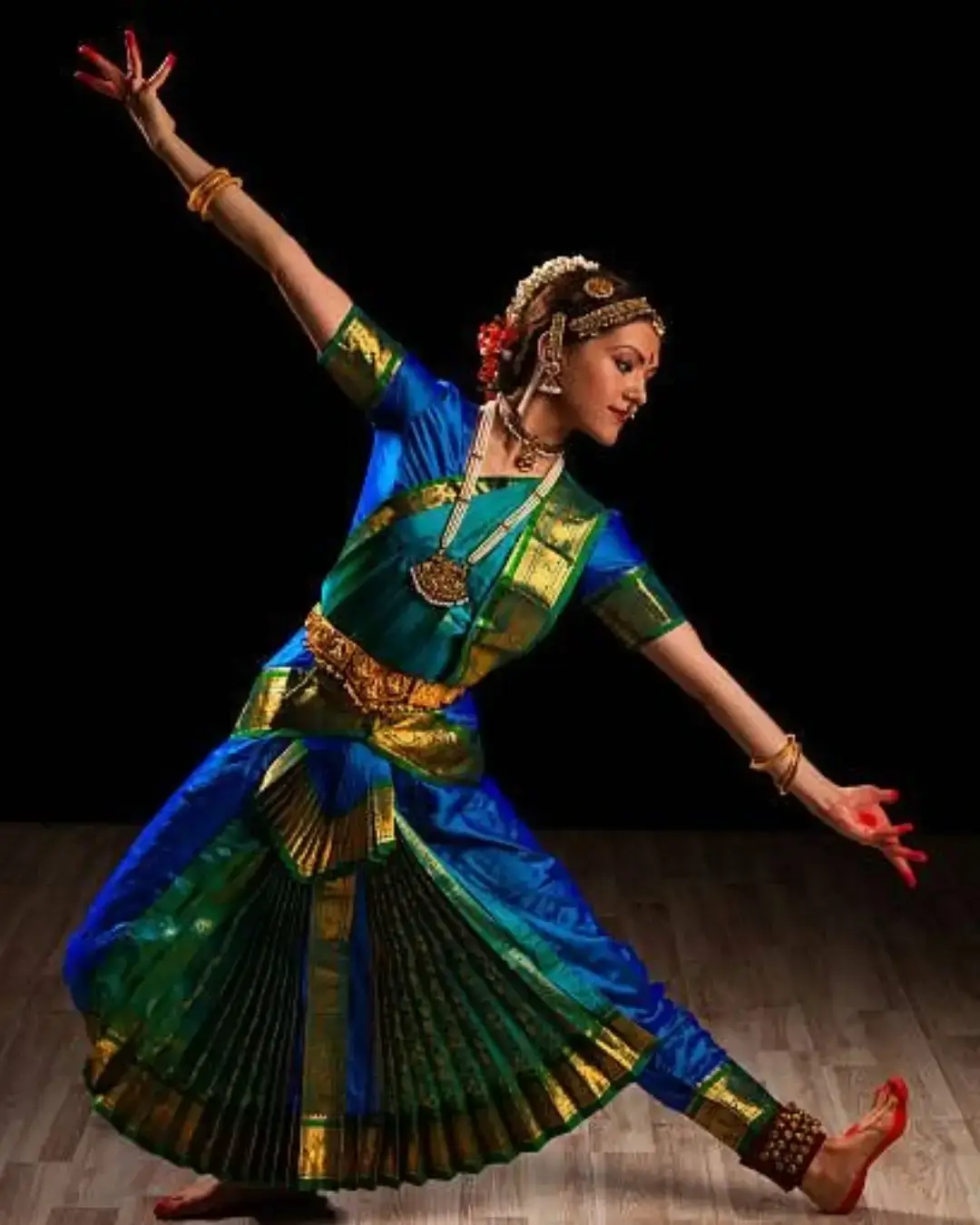Bollywood Dance
Bollywood dance is not just a type of dance but a form of art which started in the Indian film industry. It is a fusion of traditional Indian dance and modern western styles too.
The name "Bollywood" was first established in 1970s, which meant the creation of a standardized template for Hindi films. This template consisted of such components as emotion, action, drama, romance, comedy, music, and dance, and the formula became a successful one among the audience. The name has alluded to the city of Bombay (current-day Mumbai) and "Hollywood" which represented its movie roots.
With time, Bollywood dance has developed into a cultural extravaganza, transferring the fusion of Eastern to Western traditions, as well as old to the new.
Bollywood dance is mainly identified by its animated movements and vivid and forceful physical actions. It is a storytelling form that relates to its emotions and stories by enacting them through physical movements.
The Evolution of Bollywood Dance
Early 20th Century
The traditions of Bollywood dance go back to the early 1900s, a time that pretty much coincided with the arrival of Indian Cinema. In 1931, Alam Ara was the first film that used sound in 1931. In addition to sound, dance and music have become crucial elements in Indian films.
In its initial stages, Bollywood films primarily used classical Indian dance forms like Kathak and Bharatanatyam. At that time, Kathak, which is famous for its elaborate footwork and engaging narrative, and Bharatanatyam, a classical dance that focuses on the elegance of movements and hand gestures, were the main dance forms that contributed to the success of the early Bollywood choreography. Folk dances like Bhangra from Punjab and Garba from Gujarat were also being used making the films unique to a particular culture.
During the black-and-white era of the 1940s and 1950s, dance sequences in Bollywood were more refined and elegant, reflecting the era's socio-cultural norms. Dance was often the means of the expression of the feelings of the characters and the development of the story.
The Influence of Bollywood Dance and Playback Singing
The start of playback singing in Bollywood in 1935 marked a significant shift. This shift had a significant impact on dance scenes and the way that music and movement were incorporated into movies.
Actors' Freedom
Actors were unable to execute complicated dance routines since they had to sing their own songs during performances prior to playback singing. It was difficult to dance while singing because it impacted the voice delivery. Actors had much more flexibility when they lip-synced to pre-recorded songs, a technique known as playback singing. Without having to worry about live singing, this allowed choreographers to create more complex and eye-catching dance sequences.
Music integrates Dance Choreography
This makes music and dance deeply related elements for the narrative of a movie. This integration lets filmmakers enhance the level of the storytelling by fitting appropriate dances to the music. Dance has emerged as a powerful storytelling tool, opening up channels of expression that enable the characters to express themselves more convincingly and move the story ahead. It turned choreographers into icons, as they brought lasting dance imageries during this time.
Evolution of New Dance Styles
The easy availability of playback singing has given choreographers new opportunities for developing new dance styles. Western forms like jazz and rock 'n' roll have been incorporated extensively into the Bollywood dances. This has pushed the fusion of their dances into something more dynamic and versatile form of expression.
1960s-1970s: The Golden Age and Fusion of Styles
The 1960s and 1970s are regarded as the "Golden Age" of Bollywood cinema. The 1960s and 1970s were the era of fusions of Indian and Western dance styles. Jazz, rock and roll, and cabaret styles of the West entered the horizon of Bollywood cinema. Artists such as Helen, Bollywood's first "item girl," merged western movement with the classical Indian aspects. This combination resulted in something exciting and a fresh new aesthetic where the best from both worlds blended together.
1980s-1990s: Disco, Pop Culture, and Global Appeal
During the 1980s and 1990s, Bollywood dance became quite a spectacular performance. Bollywood films had choreographed dance sequences filmed over opulent environments, often with elaborate costumes and locations.
Disco Music Takes Over
The phenomenal success of disco in the late 1970s found its way into the Bollywood films due to the influence of composers such as Bappi Lahiri and Biddu, who have added the disco beats into their music in a major way. Films like Disco Dancer (1982) showcased energetic dance numbers set to upbeat disco music, which became a hit among audiences. Songs such as "I Am a Disco Dancer" became iconic manifestations of the disco phenomenon in Indian cinema.
Changes in Choreography
The emergence of disco led choreographers to play with Western dance styles, such as jazz, breakdancing, and hip-hop. When such famous choreographers as Saroj Khan began to mix traditional Indian dance elements with these new formalisms, it led to energetic and exciting performances. Dance rhythms changed from more formalized routines to more free style freer choreography that moved with the rise and fall of the bouncy disco rhythm.
Changes in Visual
The disco era also introduced new ways of presenting dance in films. The costumes were flashier, featuring shiny, bold and, flowing fabrics as well as glittering patterns to emphasize the kinetic energy of disco. The filming team also utilized the latest set creation methods and lighting to revolutionize the sequences. Such a technique bolstered the magic and the appeal of Bollywood dance, for they were even more captivating.
The disco trend was a reflection of the social changes seen in India during this period. Characters from the dance sequences portrayed happy situations such as dancing at fancy parties or nightclubs which really made them feel the spirit of the era. Such dances, by themselves, were the depiction of the disco culture that had become a wishful style of living the life.
Legacy and Continuing Influence
The influence of disco on Bollywood dance opened up avenues for further trends. This gave way to a dynamic aesthetic that continued to inspire Bollywood in the following years as many songs of the disco era were remixed and referenced in contemporary cinema. Bappi Lahiri, vocalists such as Nazia Hussain, choreographers such as Saroj Khan and Farah Khan all helped to shape the musical soundscape, but also helped change the dance sequences and made them an integral part of Bollywood productions.
The decade of the 1990s saw a great cultural shift to the Western pop influence and MTV culture in Bollywood. It reached a point where dance sequences became so popular that they sometimes stole the thunder away from films in which they were featured. The simplicity of Bollywood choreography helped to engage audiences even more, thus making the Bollywood dance even more popular abroad, especially among the youth.
21st Century: Bollywood Goes Global
It's the 21st century, and Bollywood mince has evolved into a diverse dance style that is almost wearable all over the world. Films like Dilwale Dulhania Le Jayenge, Devdas, and Kabhi Khushi Kabhie Gham greatly improved the outreach of Bollywood to the international audience. Shiamak Davar and Remo D'Souza are directors who introduced a variety of disciplines such as hip-hop, salsa, contemporary dance and street styles to Bollywood.
Modern Era: A Blend of Cultures
Today, Bollywood dance stands out for energizing performances, athleticism, and complex choreography. Traditional Indian dance is enriched further with worldwide elements, shaping dynamics and diverse set tracks to attract the interest of global spectators. Dance has reached the level of an integral part of Bollywood films and is not only seen at the cinemas but is also performed at international events, award shows, and dance competitions.
Global Influence
Bollywood is a global phenomenon. Initially, it was an Indian cinema spectacle and now it is an art form that is internationally accepted and even dances, flash mobs, and performances have started to emerge in cities like New York, London, and Sydney. Bollywood has participated in international dance competitions and reality shows, which has made it more appealing to a wider audience.
By mixing traditional Indian dance with modern aspects from all over the world, Bollywood dance is a vibrant phenomenon. Its embracing of different cultures and ability to relate to people of various backgrounds has made it an art form for everyone, no matter the age and ethnicity.
Bollywood Dance Costumes
The expression of Bollywood dance can be attributed to a lot to the costumes and the acrobatics the actors perform. These colorful and expressive costumes are a significant part of the feel of each show and the visually stunning experience. The combination of traditional Indian fashion with modern, global designs is what an outstanding Bollywood dance costume looks like and is what adds depth to the scene. Whether as part of a showstopping wedding sequence or a street dancing battle, these costumes give the audience a connection to the story they can feel.
Traditional Roots
Indian cultural heritage often imbibes on Bollywood spinning dance costumes. You will find sarees and lehenga in classical or romantic dances, which have intricate embroidery and rich fabrics. Male dancers can wear sherwanis or kurtas, giving a royal feel to festive or historical performances. Bollywood also takes ideas from local folk dances, using bright turbans and ghagras to honor India’s variety.
Fusion Fashion
Costumes in Bollywood dance also incorporate traditional Indian clothes with Western style. Crop tops with lehenga skirts or Western-style gowns with Indian embroidery are some of the common go-to’s. For a more urban feel to certain songs, dancers may wear streetwear like jeans and sneakers, mixing international styles with Indian features.
Colors and Symbolism
Bollywood dance costumes are dominated by bold, bright colors. Reds, yellows and greens speak of joy and celebration, while colors such as red are often associated with love and white can symbolize innocence as easily as it does with mourning.
Costumes for All Types of Dance
Bollywood's diverse dance forms necessitate a variety of outfits. Folk dances are dressed in colourful kurtas and ghagras, while classical dance feature more formal clothing like sarees. Bollywood style is shown in the modern performances' tendency to wear informal, contemporary attire.
Details and Accessories
Bollywood takes costumes to the next level with heavy embroidery, sequins, and mirror work that catch the light and add drama to the performance. Jewelry is important, including ornate necklaces, bangles, and anklets for glamor. Footwear ranges from ghungroos (ankle bells) in classical dances to sneakers in modern sequences, underscoring the rhythm and style of each dance.
Famous Costumes
Certain Bollywood dance outfits have become famous and shaped fashion trends. Madhuri Dixit's saree in Hum Aapke Hain Koun and Deepika Padukone's lehenga in Ram-Leela created new fashion norms, while Hrithik Roshan's modern clothes in Bang Bang led to a fresh trend in casual, street-inspired dance wear.
Bollywood Dance Choreography
Bollywood dance choreography is much more than just doing the right steps, it is the artistic combination of movement music and storytelling that once in a while culminates in the film. The choreography is the soul of Bollywood movies. Its main role is turning ordinary scenes into spectacle, which in turn lends depth to emotions and makes songs memorable. The choreography is important whatsoever kind of film being made, so its presence is crucial for the narrative and the feel of the whole movie.
1. Dance as Storytelling
Bollywood dance at its core is also a medium for the communication of the story. Every dance sequence is a fragment that the viewer needs to experience to understand the scenes, yet it is suggested that you go through the story (narrative) first. Since dance is the sole medium through which the audience may experience the emotions, the main choreographers make a statement by translating the nonverbal communication into dance language.
Expressing Emotions:The picture embarks on the character's feelings, i.e., happiness, sadness, love, or anger. Dancers convey their personalities' thoughts by means of subtle gesticulations, clever facial movements, and choreographed body language. Tender moments are created by the soft smooth pictures, while action full of energy, the kind that shows stress and problems, are represented with fast, sharp motions.
Movement Symbolism:The movements in a Bollywood dance are often metaphorical and may have certain meanings. For example, using smooth hand movements to convey a sense of flirtation, performers flying across the stage to show freedom, and victory. The choreographers even the smallest parts are essential if the story is good.
2. Stunning Visuals
Bollywood choreography is held in awe because of its sheer brilliance and grandeur. Each piece, whether being that of a group or an individual, is designed to be a visual treat to the audience. Movement is not only the main goal of the choreography; the idea is also to inspire the audience and leave a lasting memory with them.
Combined Group Dancing:Comparison of Bollywood dance is the synchronization of the dance sequence. Whether it is a high-spirited wedding song or a party, numerous dancers who are moving at the same time augment the visual impact. This cooperation is a source of oneness and rhythm, such an infusion of energy in the production.
Colorful Settings and Sets:The directors of dance often choose the banging glass sets or explore the stunning breath-taking outdoors to alternatively pump the dance's visual appeal. Be it the historical palaces or the phenomenal landscapes, choreography is delicately put together to be an inner part of the theme, thus melting the background with the show itself.
3. Evolving Dance Styles
Bollywood dances are a fantastic melting pot of Indian traditions and the latest international trends. This fertile mixture of different dance styles also allows for choreography to follow the current day's styles both in Indian movies and international cinema as well as allowing dances to be diverse.
Traditional Indian dance styles like Kathak or Bharatanatyam are the basis for the Bollywood choreography as well, especially in the films that take place in the past. However, choreographers may also embed modern dance forms, such as hip-hop and jazz, thus a completely revolutionary language of dance is born which respects the old ways but keeps up with modernity at the same time.
Through the medium of Bollywood, India's diverse culture comes alive and mingles with global trends. For instance, with salsa, it may be featured in a romantic duet or maybe with breakdancing in a street scene. This kind of adaptation is what makes Bollywood dance a truly universal form of expression and a way for people to enjoy it worldwide despite differences in culture.
4. The Importance of Music
Each time you watch an Indian movie, you understand one thing: there is something about Bollywood music that makes us want to dance. The rhythm and melody of the song closely related to the choreography, the movements that mimic the music's flow—be it a slow-tempered ballad or a swift tempo track.
Choreographers develop sequences that connect the body’s rhythm with the song’s rhythm, thereby contributing to the continuous upbeat feel of the dance. The beat just gives life to the dance creatively. The reaction a choreographer wants to get from the dancers is simply the expression of natural movement caused by the beat. If the song is up to the mark, then the feeling of the visual act will be elevated which the song gives an emotional touch to.
Types of Dance Styles in Bollywood
1. Classical Indian Dance Forms
Kathak:As originally from northern India, Kathak is characterized by the use of complex footwork, rapid turning, and expressive hand gestures. This traditional dance form is often employed in Bollywood to portray emotions and stories on gestures (mudras) and the human face.
Bharatanatyam:Bharatanatyam is one of the classical dance forms of India in which the rigor of movements, firmness of postures, and intensity of dramatic expressions are well known. It is commonly featured in the Bollywood traditional sequences, usually involving devotion or deep emotional experience.
Odissi and Kuchipudi:Although less popular in Bollywood, elements of Odissi and Kuchipudi have been incorporated within the choreography. Examples of these classical styles are ones that focus on elegant, fluid motion and, moreover, usually used to lift a scene spiritually or culturally.
2. Folk Dance
Bhangra:Originating from Punjab, Bhangra is a vigorous dance form characterized by robust, rhythmic movements. It is widely featured in Bollywood, wedding scenes, celebrations, and festivals.
Garba and Dandiya:Dances from Gujarat have the main features of circular movements, clapping, and sticks (Dandiya). They are often seen in Bollywood during festivals of tradition, especially during the festival of Navratri.
Lavani:A lively dance, characterized by rhythmic movement, from Maharashtra known as Lavani, comprising rhythmic footwork, and a powerful yet sensuous aura. It is quite commonly found in songs in Bollywood to praise femininity and strength.
3. Western Dance Forms
Hip-Hop:Hip-hop has become one of the most powerful Western inroads in Bollywood and brought the urban, street-style vibrancy to dance performances. Breaking, popping, and locking are themes in contemporary Bollywood films.
Jazz:Grown familiar with the world of Bollywood in the 1960s and 1970s, jazz has given dance a refined, cabaret-style chic. Today, jazz remains an inspiration for Indian Bollywood dance, providing seamless, fluid, and elegant types of movements to current film sequences.
Salsa and Latin Dance:Latin dance styles, salsa, samba, and flamenco have become popular in Bollywood's romantic scenes, generating sensuality and flair into duets and intimate scenes.
Contemporary Dance:Inspired by ballet and modern dance, contemporary dance has invaded Bollywood especially in scenes fraught with high emotions. Its dynamic, flowing nature allows for interpretive storytelling and is commonly featured in dreamscapes or artistic presentations.
4. Fusion Dance
Bolly-Hop:Bolly-Hop unites Bollywood dance with hip-hop music, using expressive Bollywood moves to energetic hip-hop beats. This style is common in dance contests and rousing film scenes.
Indo-Contemporary:Fusing Indian classical or folk idiom into the contemporary dance of the West, Indo-Contemporary is commonly used in affective performances, mixing the traditional elegance of Indian dance with the plasticity of contemporary dance.
5. Freestyle Bollywood Dance
Freestyle Bollywood dance is noncompetitive, and activities are available for dancers of every ability. This style mixes different genres, but most significantly, it celebrates individuality and enjoyment. Freestyle Bollywood dance is frequently used in group dance, wedding, or flash mob performances, and the focus is on celebrating creative expression and group energy.
Best Bollywood Dancers
Female Dance Divas:
- ● Vaijanthimala
- ● Waheeda Rahman
- ● Sridevi
- ● Madhuri Dixit
Male Dancers:
- ● Mithun
- ● Govinda
- ● Javed Jaffrey
- ● Hrithik Roshan

